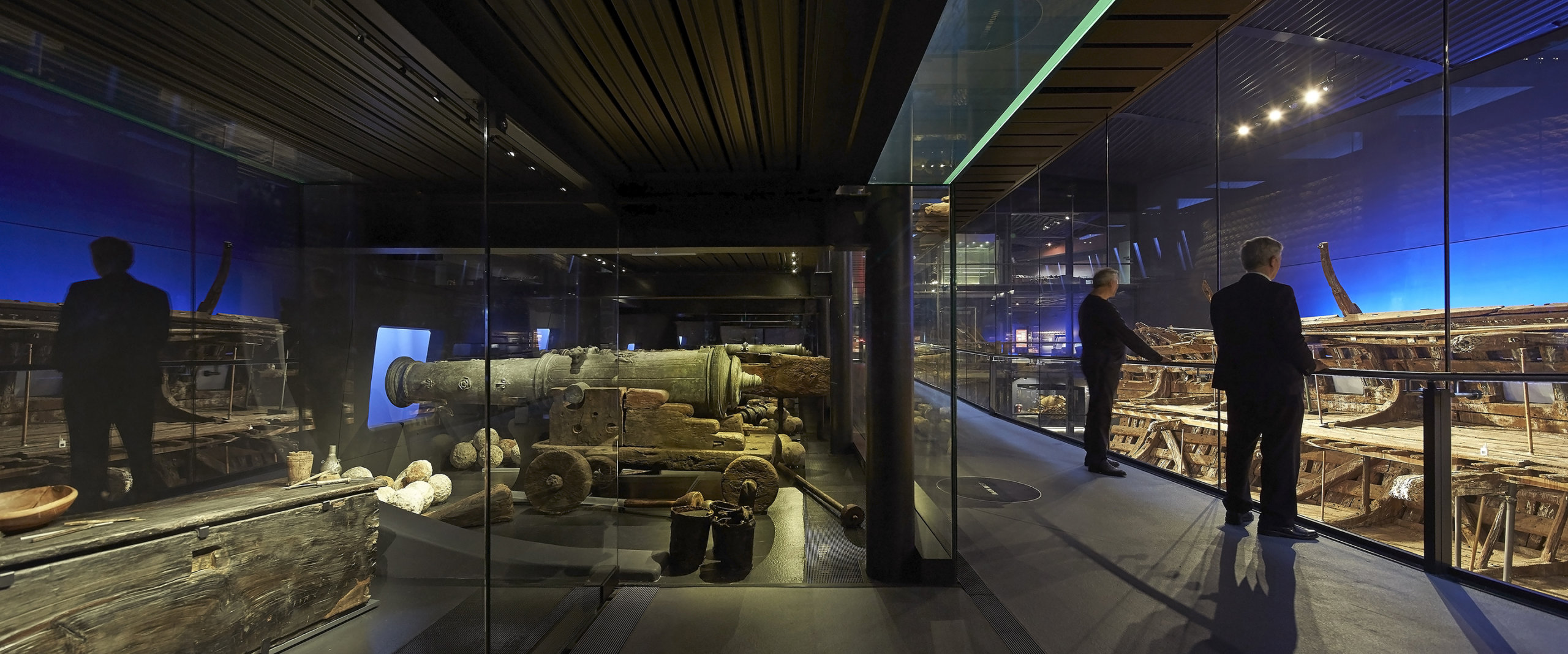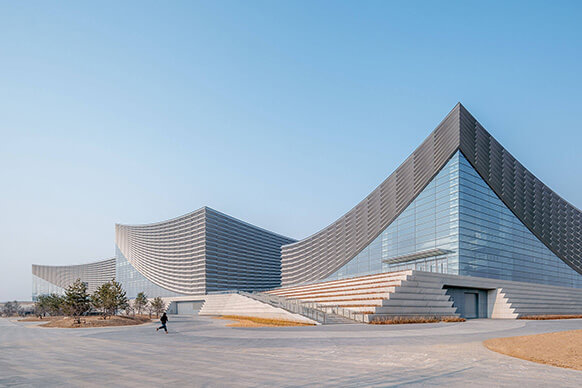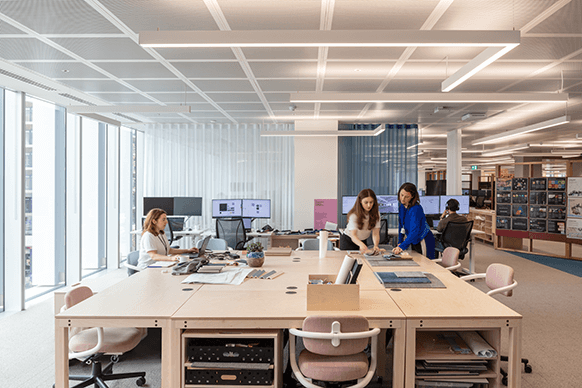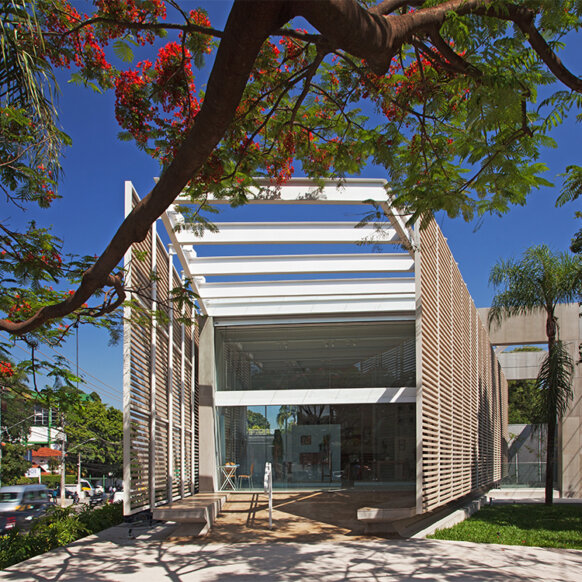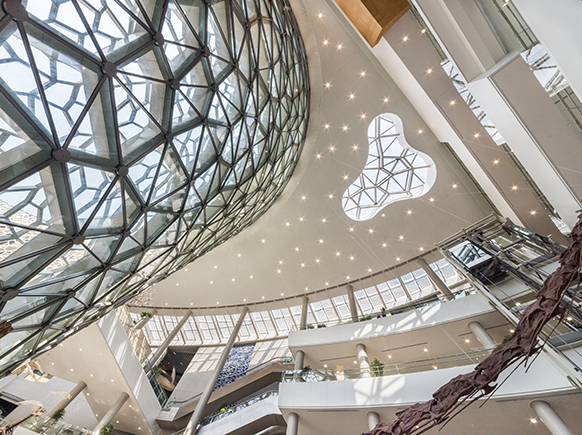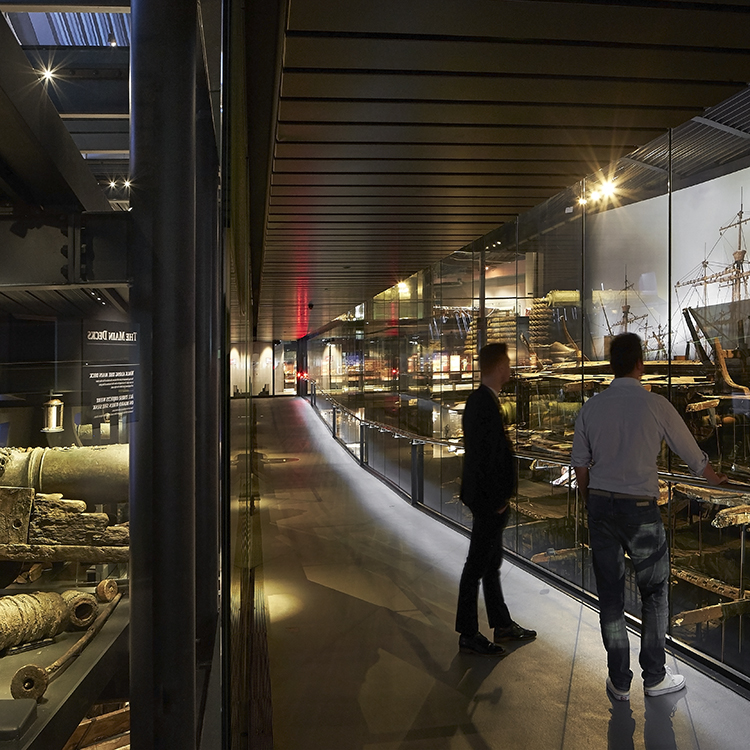
Mary Rose Museum
Henry VIII’s favourite warship, The Mary Rose, was sunk in 1545. Lost to the world for more than 400 years, the ship was raised and brought into Portsmouth Historic Dockyard in the early 1980s. In 2004, we were chosen to design the interior exhibition space for a new museum that would reunite a staggering 19,000 artefacts with their ship.
The sweeping timber structure mimics the Mary Rose’s hull and takes visitors on a voyage, which starts on the main deck before descending into the exhibition’s depths. With gently sloping walkways and no natural light, a dramatic atmosphere is created that provides a unique insight into what life may have been like for those who lived and worked aboard.
The exhibition ends in dramatic style with a majestic ascent through the ship’s levels in a glass-walled panoramic lift that culminates with a bird’s-eye view of the whole structure.
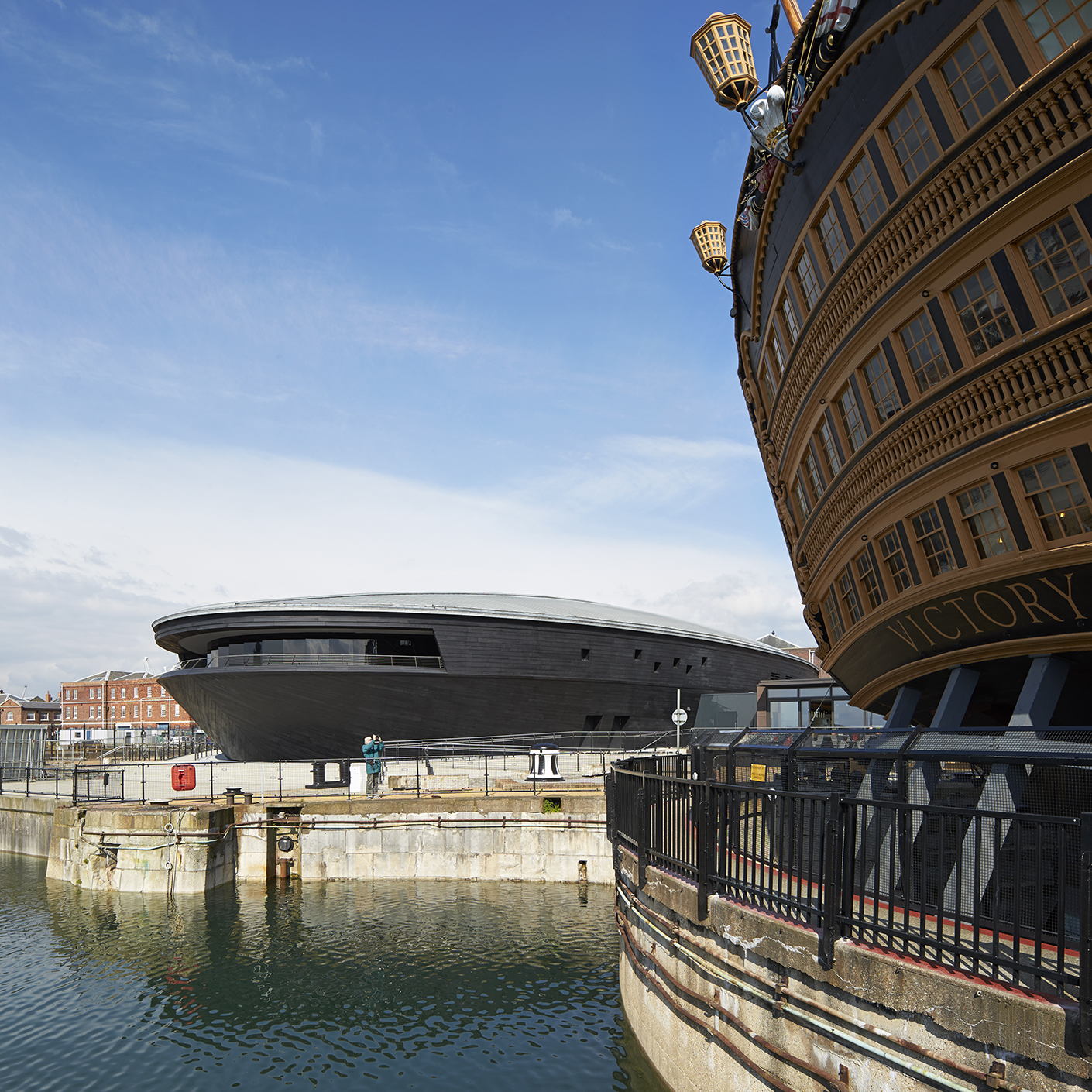

Described by the 2018 European Museum of the Year judging panel as, “an exceptional achievement,” the Mary Rose Museum is ranked as one of England’s most important museums and considered one the highest rated visitor attractions in the South of England.
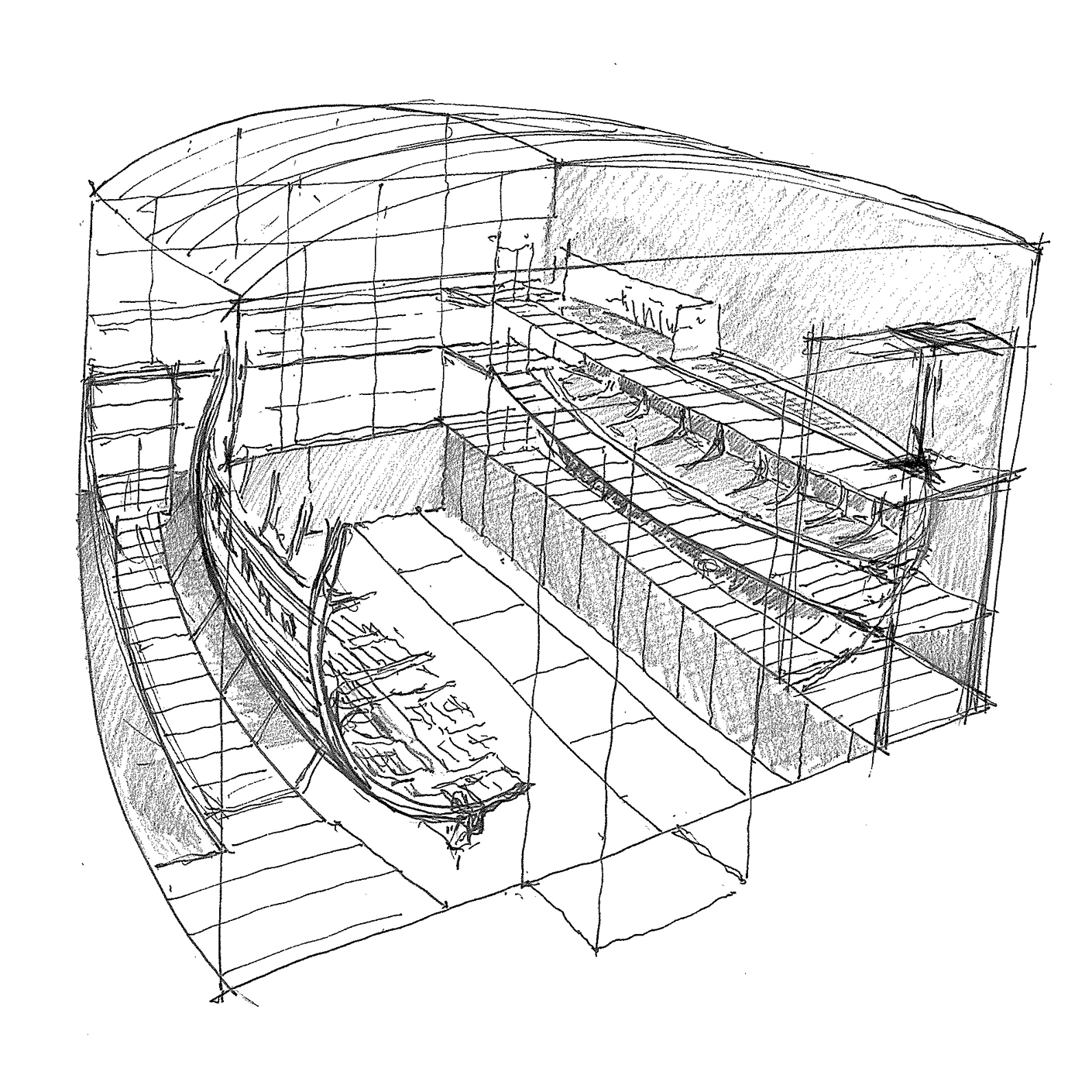
The atmosphere of being on the ship is enhanced by the walkways that follow the shape of the deck from stern to bow and low ceilings on the lower deck. The Museum spaces are deliberately dark with all daylight excluded and the only lighting either focused on the objects or concealed under the walkway handrail, lighting the space and re-creating the dark claustrophobic spaces below decks.
Working with the Mary Rose Trust and its curators, we created one of the largest glass exhibition cases in the world, allowing visitors to peer into the ship’s hull. The cross-section offers a recreation of life as it looked for the sailors on the day the ship sank during a French invasion in 1545. We also designed the Museum’s galleries and ancillary spaces, while Wilkinson Eyre, the base build architects, were responsible for the building that surrounds the ship.
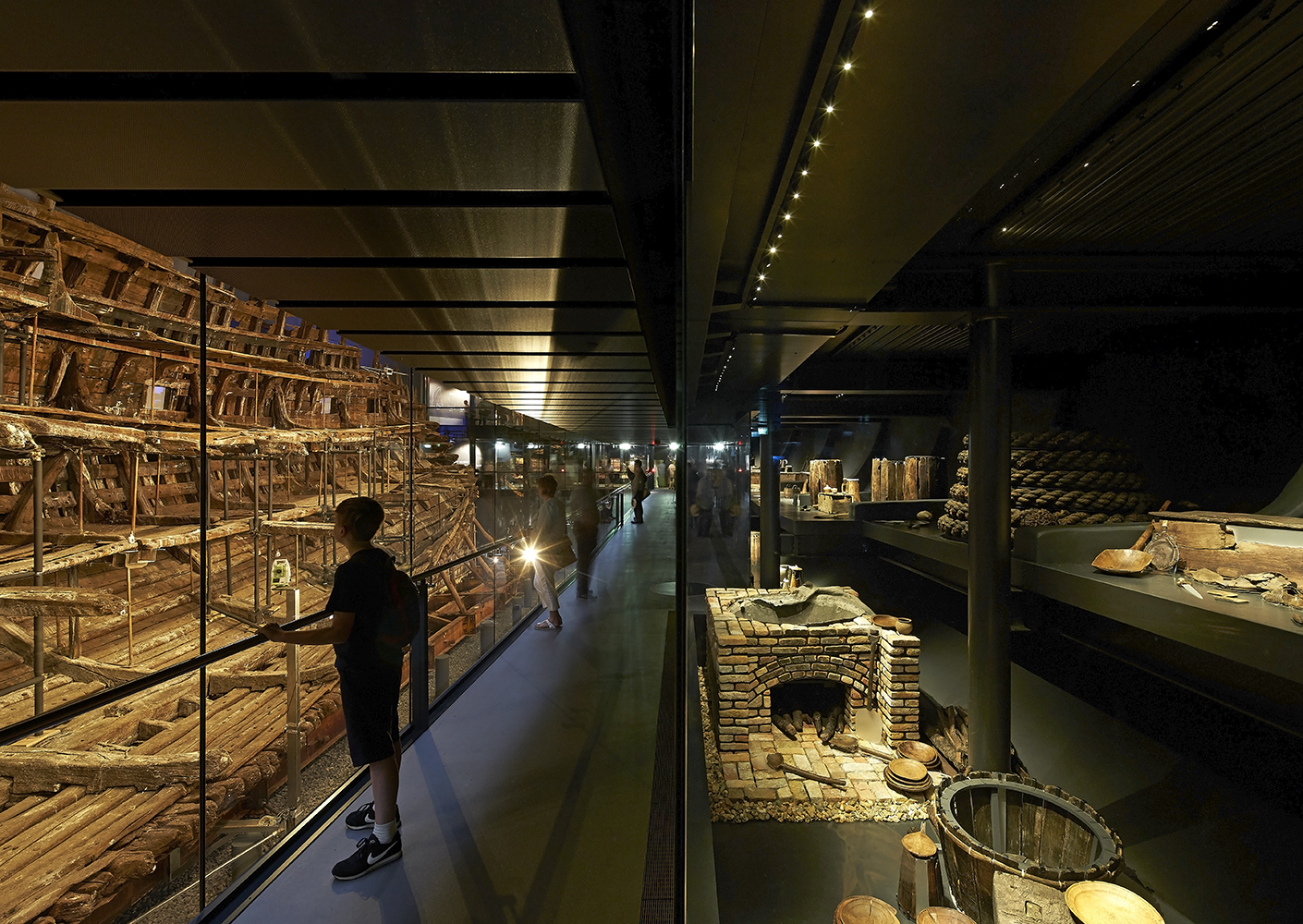
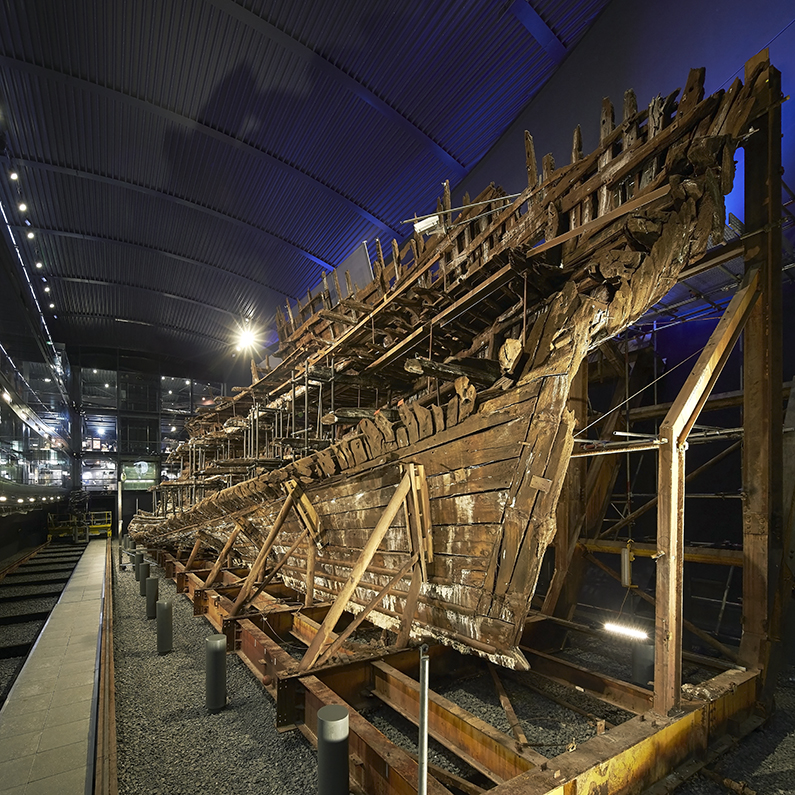
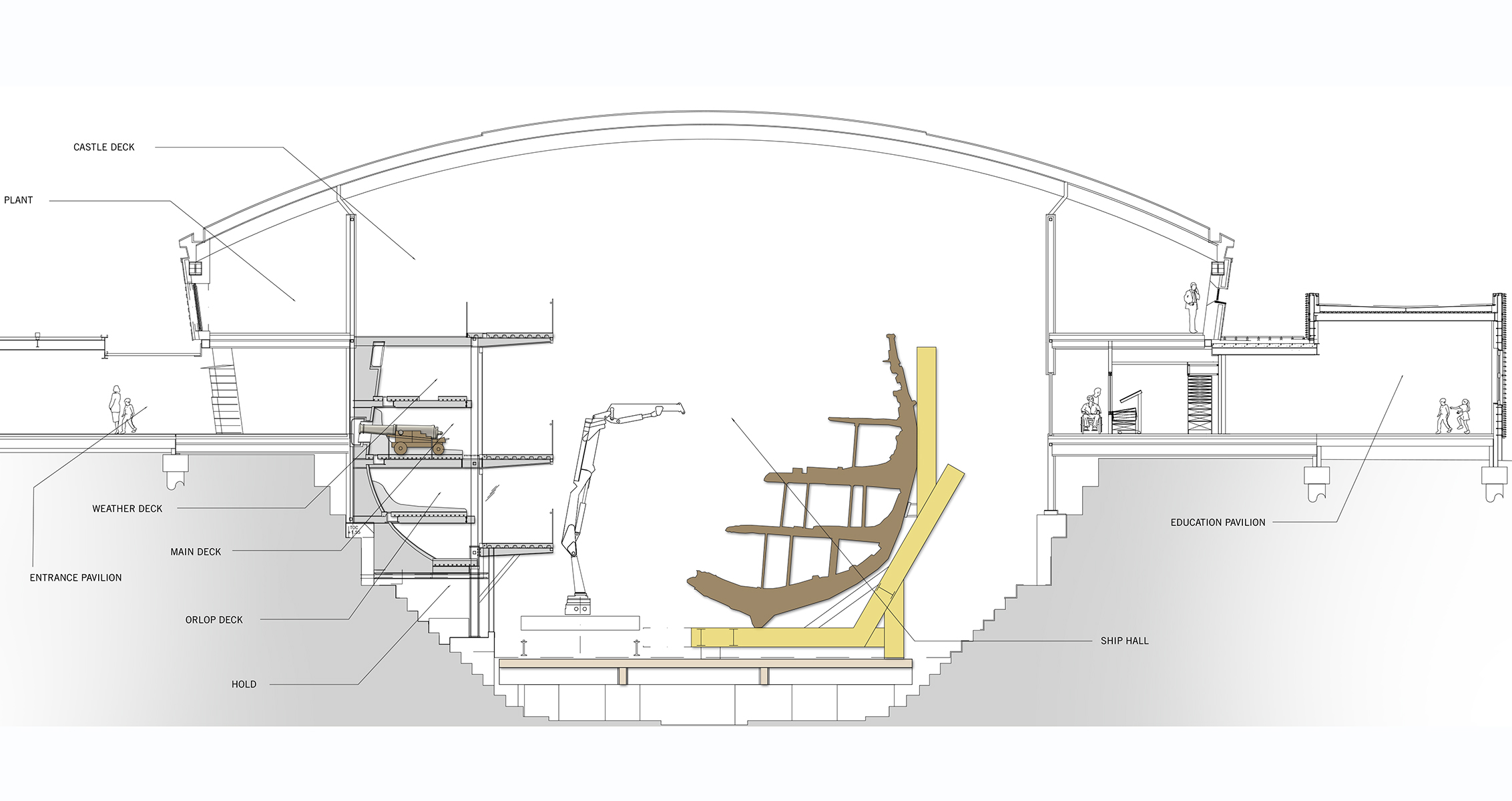
The Museum’s goal is to educate. And the space succeeds, bringing the Mary Rose’s remarkable story to life in vivid detail. From infants to post-graduate and doctoral students, the museum serves as a resource for all, with two classrooms capable of accommodating up to 30 students. The entrance to the education pavilion opens into a lobby that also acts as a breakout space for school children. One of the classrooms is flexible with sliding folding walls to create a larger multi-purpose space that can accommodate up to 45 people for corporate events.
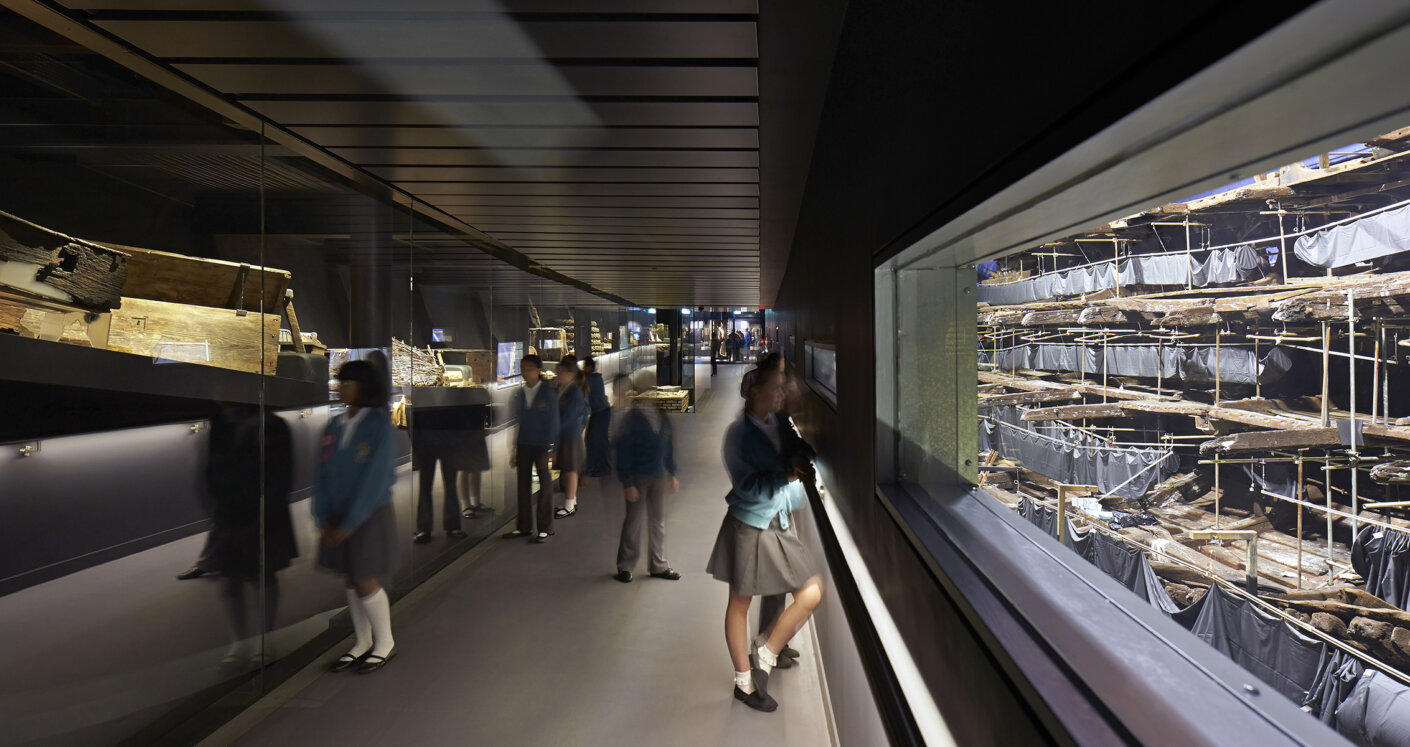
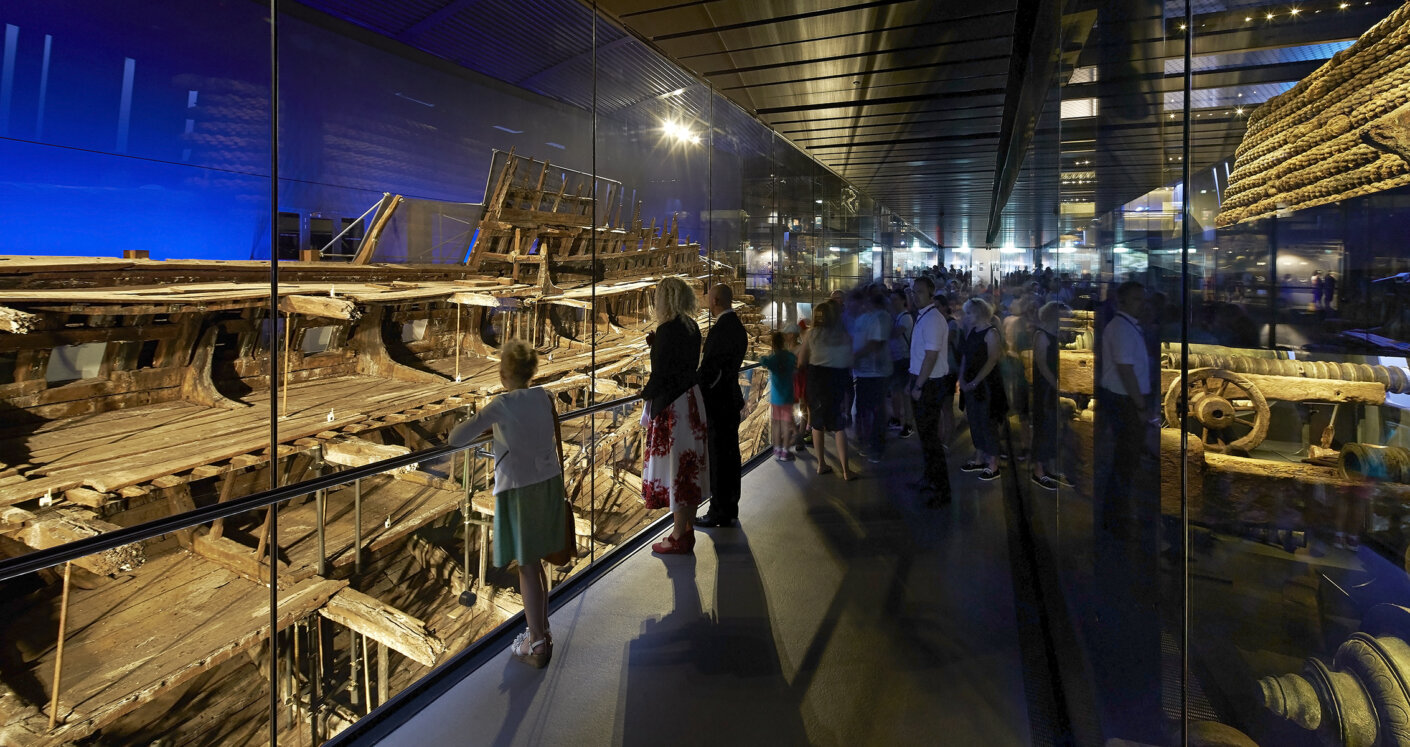
Everyone should be able to enjoy the Mary Rose’s incredible story. We wanted to ensure that everyone can enjoy the space, designing a fully accessible museum, from the sloping walkways to the large panoramic lift at the exhibition’s finale.
